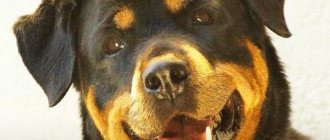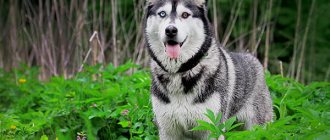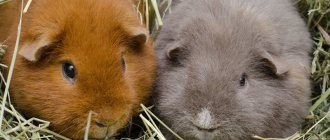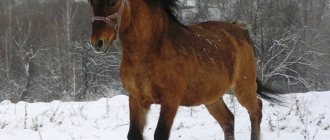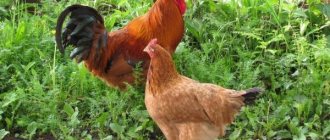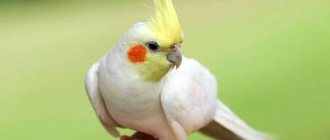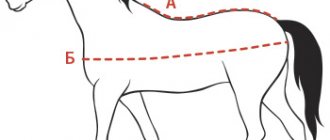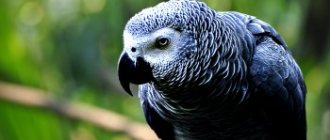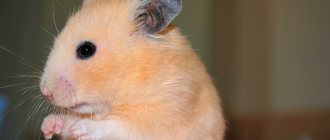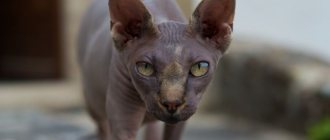Horse lifespan
Before buying a fast horse, any farmer and horse breeder wants to know how long the horse lives. Nowadays, this kind animal is used in agriculture; in some places remote from civilization it is still a means of transportation.
Horse lifespan
The period of their suitability for service with the owner depends on how long the horses stay healthy. The profitability of such an animal depends on its health, performance and life expectancy.
Wild
How long wild horses live in their natural environment largely depends on the climate zone. A mild and warm climate “gives” animals an extra 7-10 years of life. In harsh northern latitudes, there is less chance of surviving the cold winter. In addition to weather conditions, predators, various diseases, accidental injuries, lack of sufficient food, and wear and tear of hooves “participate” in natural selection. Older horses are rarely found in nature. The average life expectancy of “savages” does not exceed 15 years.
What affects the lifespan of horses?
How long horses live determines the period for acquiring young stock, the breed’s breeding schedule and other parameters. It is, of course, necessary to take into account the fact that the life expectancy of a domestic horse and a wild one will differ significantly, which is also influenced by the conditions of keeping the horses.
Differences in lifespan will also be observed among different breeds. Thus, thoroughbred horses sometimes die very young, but a simple farm horse can live to an old age.
average life expectancy
When asked how many years horses live on average, horse breeders and hippologists (specialists in the study of horses) answer differently. Some say that on average horses live from 25 to 30 years, others say that the average life of a horse is 35-40 years. You need to understand that there is no one figure for all horses, since you cannot compare a horse that was raised in the wild with a domestic mare or a horse bred for specialized exhibitions. The same applies to a stallion for racing or equestrian sports.
The lifespan of a horse will vary depending on the breed
If all these conditions are taken into account, the average lifespan of a horse can be defined as 15 to 40 years. But not all individuals live to an old age. An interesting fact is that depending on the breed, the lifespan will vary:
- Domestic working horses live on average up to 20-25 years. How long one can last largely depends on the person. The better the conditions created for the horse and the more caring the owner is, the longer the pet will be able to enjoy health and longevity. Genetics and individual endurance also play a big role.
- Sports horses live 5-7 years longer than working horses. But in this case, the result of physical activity plays a big role. If the horse does not receive injuries and his daily routine includes a lot of time for rest and recuperation after the race, such a stallion has every chance of surviving into old age. The main thing is not to bring the animal to exhaustion. So, some horse business owners exhaust their horses to such an extent that they get a heart attack at a fairly young and productive age. Sometimes a horse that no longer generates income and becomes unprofitable is simply killed.
- Breeding individuals bred on horse farms can live up to 35 years. They are given more attention and looked after much more carefully. This is due to the fact that these animals are valuable specimens for procreation. It is high-blooded breeds, such as Arabian or Akhal-Teke horses, that are long-lived. Due to their profitability, such horses receive timely and high-quality treatment in case of problems.
Diet
The role of good nutrition in a horse’s life is paramount. Centuries-old experience of keeping shows that the life expectancy of horses, with proper care and varied balanced feeding, is at least 25-30 years.
Grocery list
In the wild, horses live and feed in fields and meadows. For 20 hours a day they eat green food:
- clover;
- nettle;
- alfalfa;
- chamomile;
- milk thistle;
- burdock;
- dandelions, etc.
These animals have a small stomach and cannot eat a large portion of food at once. Therefore, the horse must have constant access to feed in the stable and the opportunity to graze in the warm season.
It should be remembered that you should feed her an hour after intense training or heavy work.
Horses are given:
- succulent feed - fresh grass, sunflower and corn silage (not suitable for pregnant women and racehorses), canned grass and grass saturated with lactic acid bacteria, wild plants, green corn, tubers, pulp, root tops;
- roughage - straw, chaff of spring crops, hay, as the main nutrition of the horse, its calorie content is the same as that of oats, but there is 8 times more calcium and protein, three times more fiber. When preparing hay, it is important to take it from different places to provide more variety of grass;
- concentrated feed - oats, wheat, barley, corn;
- technological production waste – meal, cake, bran, etc.;
- feed additives - premixes, fish oil, fish and meat and bone meal, chalk, table salt, yeast.
Features of drinking
The horse is given water three times a day, before feeding, 15-20 liters of fresh water, in the hot season up to 70 liters per day.
Don't finish your drink is unacceptable! The water temperature should not be lower than 8–12°.
After feeding dry food, the horse needs to be given water. You can’t give the animal water immediately after work or racing; it needs to cool down.
Installing automatic drinkers in the stalls allows you to individually regulate the time of drinking and the amount of water drunk.
How much does food cost?
It costs at least 10 thousand rubles per month to feed (basic food and supplements) 1 individual weighing 500 kg.
How much does basic food cost:
- hay – 450 kg at a price of 5 rubles. per kg, total 2250 rubles;
- oats - 210 kg at a price of 13 rubles, total 2730 rubles;
- vegetables – 150 kg, about 2200 rubles;
- bran – 60 kg, 600 rub.
It is difficult to say how much you will need to spend on additives. This largely depends on the additives themselves, the time of year, etc., on average it will be up to 2 thousand rubles per month.
Life expectancy in wild and domestic conditions
There is a difference between how many years horses live at home and how long they live in the wild. Of course, under natural conditions, wild horses die before their due date, because there they have to fight for survival.
Thus, out of the entire annual brood of wild horses, only 30% of all individuals reach full maturity. Most young foals die from the teeth of predators. Accidental injuries to horses are also a common cause of death. A sick individual cannot follow the herd, cannot provide itself with the security that the herd provides, and also cannot provide food and drink.
Home living conditions
In ancient times, when horses performed a large amount of complex work on the farm, the age limit for them was 12 years. But now the conditions for animals have become much more pleasant. Now the question arises: at what age can a horse be called old? As mentioned above, horses live for different lengths of time, but at the age of 25 they can be retired.
Home living conditions have a beneficial effect on the lifespan of a horse
The development of science in the veterinary field also plays an important role in the longevity of domestic horses. Today, most diseases that were previously fatal are easily curable and do not pose a serious threat to the health and life of animals. Also, at home, horses are fed properly and provided with good care, which greatly increases their chance of living to an old age.
Wild habitats
Many factors prevent wild horses from living a long life. Horses have to survive in harsh climates, cope with temperature changes and natural disasters, and protect themselves from predatory animals.
In addition, the diet of wild horses is very poor, especially in winter. Many horses die from viral infections and various diseases. So horses that lie down on the frozen ground out of fatigue in winter get pneumonia and simply burn out. Sometimes the cause of death of adults and foals is cold water drunk by hot horses. There is no one to treat them; there is also no good food due to the season; as a result, the sick horse simply dies.
Defects and anomalies
The most common problem is extra teeth or so-called tops.
They appear at any age and cause a lot of discomfort and pain. Since they appear without a pair, they injure the oral cavity and often cause inflammatory processes. The tops can fall out on their own - they do not have alveoli, so the connection with the jaw is small. But most often their mechanical removal is required. In this case, it is best to contact a veterinarian, as he has special equipment for this.
Did you know? Horses have a very keen sense of smell . Previously, for better control, riders and owners always lubricated their hands with aromatic oils so that the animal did not smell the sweat from them. In addition, horses cannot stand the smell of blood.
Very often, horses develop all sorts of cracks on their teeth, and sometimes breaks occur. The causes of this pathology can be injuries, improper care and nutrition. If an animal begins to take less food or refuses it altogether, this is one of the clearest signs of the development of painful and pathological changes. Dental problems are often accompanied by gingivitis and glossitis due to damage to the mucous membranes. Cracks in teeth must be treated, and tooth fragments must be removed. It is best to call a specialist for this, as additional treatment with medications and antiseptics may be necessary if the lesion is large.
Tooth decay is another problem that occurs as a result of cracked teeth. If they are not treated in time, the damage spreads not only to the teeth, but also to the pulp and gums.
The pathology is manifested by chewing disorders, bad odor and excessive salivation. Bare cavities and pits appear in the teeth.
If the teeth are affected by caries, it is best to remove them, especially if the horse is old. It is also practiced to clean the oral cavity with special cement, which removes plaque and caries.
This is interesting: Learning to ride a horse - how to train a horse
Factors influencing longevity
Many factors influence a horse's lifespan. All horse breeders know them and try to adhere to them, as this makes it possible to maximize the lifespan of their horses.
The basic rules that ensure the longevity of horses are:
- quality care and proper maintenance;
- proper and healthy nutrition;
- horse breed;
- attitude towards domestic or wild horses;
- purpose of domestic animals: for work, for sports, for racing, breeding horses.
The lifespan of a horse is directly related to its care.
The main conditions are cleanliness and dryness in the stable. If the room is dirty and damp, animals may become ill: their joints may become inflamed and their legs may swell, since this part of their body is very sensitive. It is also important to maintain a work and rest schedule: to provide the animal with proper sleep. Horses of all ages need physical activity to maintain healthy muscles and overall body health.
A horse's longevity depends on its care
Diet
The feed ration is of great importance. The diet should be balanced and include the following components: hay and straw, grain crops and mixed feed, in the summer - freshly cut grass, as well as vitamins and minerals. It is recommended to release the herd onto pasture, where each individual has access to all types of grass, and provide plenty of water.
Age of a horse by human standards
The age of a horse by human standards is a relative concept; it gives only an average idea. It can be calculated as follows:
- The first year of life corresponds to 12 years in humans,
- the second year is equal to seven,
- the third, fourth and fifth years correspond to the 4th human years,
- all other years are counted as 2.5 years for a person.
Thus, the life record of a horse recorded in Russia - 32 years - by human standards would be 98.5 years. And the famous British record holder, who lived 62 years, among people would be considered an almost biblical long-liver - 173.5 years.
Horse in the wild
It is not enough to know how many years horses live. We also need to understand how they develop. For example, their growth occurs before 4-6 years of age, and for most, their peak physical fitness occurs at 9-10 years of age. But with good care, horses will work for many years - up to 18-20 years at least.
Life expectancy in wild and domestic conditions
When comparing and analyzing how many years horses live, it should be noted that their life expectancy depends on where they live. In the wild, they live much shorter lives and rarely reach old age.
Important! In their natural habitat, horses face many dangers - predators, lack of food, weather vagaries. After all, these animals can also suffer from temperature changes, from frost and heat, from drought when they cannot find water.
Like all living beings, horses are also susceptible to diseases, both bacterial and viral. They can also be weakened due to the activity of parasites. This also negatively affects life expectancy.
Thus, in wild conditions in warm climates, the average lifespan of horses is about 10 years; rarely does an animal live to be 15 years old; this can be considered a great success. But at the same time, such a horse will still live several years longer than an animal living in less favorable conditions with harsh winters and lack of food.
Horse at home
Interestingly, habitat affects life expectancy, but not the prevalence of disease. It will be the same for both warm and harsh climates.
Domestic horses live longer. This is understandable - a person makes sure that they live in favorable conditions, that they have shelter in case of cold or bad weather, enough food, that they receive the necessary treatment on time. The life expectancy of such horses is 20-25 years, and much depends on how well they are cared for.
Mandatory visits to the veterinarian
The health and lifespan of horses depend on timely access to a veterinarian.
In horse breeding farms, all measures to prevent infectious and invasive diseases of horses are carried out in strict accordance with the technological maps of these measures.
For private owners, regularly visiting a veterinarian is also mandatory; this is their personal responsibility for the life and health of their pets.
Diseases
Like any living creature, a horse is susceptible to attack by pathogenic microbes - viruses, bacteria and fungi. According to the pathogen, there are:
- viral diseases of horses: influenza, pneumonia, smallpox, false rabies, INAN (infectious anemia);
- bacterial diseases: tetanus, myt, salmonellosis, anthrax, glanders;
- fungal diseases: trichophytosis (ringworm);
- parasitic: oxyurosis, psoroptosis, breeding disease.
Video about tetanus in horses:
Video - colic in horses:
Video - infectious disease “washed”:
Vaccination
Veterinary rules provide for certification of sports, circus, and theater horses, which must be vaccinated:
- for horse flu - every 6 months;
- for lichen and anthrax – once a year.
Horses are also examined every six months for FAP, infectious anemia, and breeding disease.
It should be understood that no vaccine provides a 100% guarantee that an animal will not contract a viral infection.
There is no guarantee that there will be no complications after vaccinations, such as allergic reactions and exacerbations of chronic diseases. Local and general reactions to vaccination are possible: lethargy, fever, rashes, colic, etc.
In any case, after vaccination the animal should rest for several days. Work and training after vaccination begin in a gentle manner.
Dental examination
Teeth are the first thing people pay attention to when buying a horse; their condition indicates its age and health. It has been proven that those individuals whose owners pay due attention to the health of their teeth live on average 10 years longer.
A horse's teeth wear out over time, by about a third by the age of 20. However, this applies more to those who live in the wild.
Pets often need periodic (once every 6-12 months) filing of teeth, which grow back without having time to wear out. This is due to the food they receive. They are not as coarse as in the wild and are easier to digest.
Molars (6, 7, 8 teeth) are often displaced, which makes chewing hard food painful.
If the teeth are unhealthy, the horse will not be able to chew food well, resulting in:
- intestinal colic;
- malnutrition;
- weight loss;
- performance characteristics;
- and ultimately, reducing its lifespan.
Therefore, regular examination of your horse's teeth and gums is very important, especially as he ages.
It is complicated by the fact that the animal’s oral cavity is elongated, and it is not so easy to examine the molars. To do this, they use a special device - a dental retractor, which fixes his mouth in a slightly open position for examination and treatment.
Today, special intraoral cameras have been invented that make it possible to determine the initial stage of the disease and the presence of abnormalities in equine teeth and gums, which is impossible during a routine examination.
Parasite Control
Today, the main scourge of an adult horse is tapeworms and small strongylids, while young horses are most often plagued by roundworms.
Helminths cause colic, decreased immunity, diarrhea and deterioration in appearance. Unfortunately, helminths are observed to develop resistance to the anthelmintic drugs used.
At the same time, horses develop sufficient immunity to most helminths, with which they actually live their entire lives; the main thing in caring for a horse is to control the degree of helminth infestation.
To do this, horse feces are examined for helminth eggs 9-16 weeks after deworming. If the number of worm eggs exceeds the norm, repeat deworming is carried out.
Determining the age of a horse
The most popular way to determine the age of a horse is by its teeth. For example, the first changes occur with the hooks at 2.5 years, and by the 3rd year the labial surface is erased, and by the age of 3.5 the middle incisors begin to change. Moreover, angular incisors appear around the age of 4, and the labial edge on them wears out by the age of 5.
You can get an idea of the age of a horse not only by its teeth. Although such methods will not give an exact figure. It is assumed that this can be determined by appearance. After all, if a horse was able to live long enough, it, just like a person, will develop wrinkles, which will be especially noticeable in the corners of the eyes and under the lower eyelid. In addition, in older animals the thickness of the nasal bridge decreases, and the lumbar vertebrae, on the contrary, thicken. This can be easily determined by palpating the transverse processes. With age, the tail and mane also thin out, and the hooves lose their shine. Unfortunately, all these signs are relative, because if the horse lives in good conditions, it will retain its excellent appearance until a very old age by human standards. So it is impossible to accurately determine age based on such signs, unless you can distinguish an older animal (over 10 years old) from a younger one.
Dentition in young and mature periods
Each tooth in these animals begins to form at the embryonic stage of development, since horses are mammals. Age is indicated not only by external data, but also by the number of teeth:
- the foal has 3 premolers, then the first canines and incisors form;
- for mature stallions - 40 pieces;
- in mature mares - 36 pieces.
Important to consider! Horses have a human trait in the process of dentition formation - the first formed teeth are replaced by permanent ones. The first molar, if the horse is healthy, is formed at the age of 1 year; at 2-3 years, replacement occurs, including premolars
The third molar appears at the age of 4 years. The main canines appear when the animal is 3-6 years old. The surface of the teeth is embossed, since the enamel is applied in several layers.
Factors influencing the lifespan of horses
The lifespan of horses can be influenced by objective and subjective factors, ranging from their breed and genetic characteristics to their habitat. In addition to the living conditions themselves, this will depend on the diet, and on how actively this animal is exploited, and on its breeding schedule (especially for mares), and on other factors, for example, on how clean and dry it will be in stables, because too high humidity can lead to diseases.
Record cases of longevity
The number of horses that live more than 30 years is relatively small. But sometimes there are genuine long-livers. For example, in England in the 18th century, a genuine record was documented - a stallion named Old Billy lived for 62 years. Moreover, it was, in fact, a heavy truck and was operated in rather difficult conditions, since its job was to tow a barge along the river.
Another record belongs to a pony from France who lived for more than 50 years. There are few cases of longevity among sports stallions, but we can recall the Duke of Tango, who lived for 42 years.
There were no such impressive cases in Russia. But there is also a record holder - a sports stallion named Budynok, who lived for 32 years.
In general, a lot depends not only on the conditions in which the horse lives. It happens that representatives of the breeding herd die young, but farm draft horses live long. This may be due to genetics and individual characteristics of the body. With good care and regular check-ups with a veterinarian, the chances of longevity increase.
Horse care
Compliance with the rules of caring for an animal directly affects its appearance, well-being and, accordingly, the age of the horse, until which it retains its performance indicators.
Hooves
The health of a horse largely depends on the condition of its hooves. They are regularly examined for the absence of destruction of the hoof wall, microtraumas after walking, racing, or work.
Already from 3-4 months of age, foals are taught to present their hoofs for inspection. Every one and a half to two months they are cut with a sharp knife, the edge of the horny wall is filed and rounded to prevent creases with a rasp. This must be done especially carefully if there is no possibility of natural full wear and tear.
If the stall is poorly cleaned, animal excrement, urine and food debris may remain in the bedding; this is a favorable environment for pathogens. Ammonia, which is released when feces rot, loosens the hoof and destroys it.
A rotting hoof will make itself felt with an unpleasant odor, black color and a slippery coating.
Hooves should be regularly dehooked - removing stuck debris, stuck dirt, pebbles, and examining hoof lesions. This is done with a special tool - a crochet hook. If necessary, if the hoof is too dry and cracking, it is lubricated with castor oil or special ointments.
Horseshoeing must be treated with extreme caution, otherwise, instead of being beneficial, the horseshoe can be harmful to the horse’s health. With good care and quality training grounds, no hoof defects or incorrect leg positioning. Young animals may not be shoed until their first race, or only the front legs may be shoed. In any case, the issue of horseshoeing is strictly individual.
Wool
A horse's coat needs daily care. Especially carefully during spring molting. In spring, skin parasites also become active.
The procedure should be carried out carefully so as not to injure the animal’s skin as much as possible, using brushes and scrapers. Start from the head and sides, moving to the back and legs. Hard brushes are used to clean the wool from dirt, soft brushes from dust, and excess moisture is removed from the wool with scrapers and dry towels.
Then the tail and mane are combed using special combs, trimmed with scissors and special electric clippers.
Bathing
They bathe a horse in order to remove dirt from the coat, mane and tail, as well as to improve the well-being and thermoregulation of the body.
It is especially useful to bathe a horse during the hot season, when heat transfer to the skin becomes difficult. Cool water hardens the animal, protects it from colds, maintains metabolism and body tone.
Bathing can also be the initial preparatory stage for teaching a horse to swim. This strengthens his respiratory and cardiac systems.
When organizing swimming in reservoirs, you need to consider the following:
- choose banks with a flat bottom;
- water temperature is preferably above +18°;
- do not bathe horses that are hot from racing or training;
- It is advisable to bathe no earlier than 2 hours after eating;
- bathing should not last more than 20 minutes;
- after bathing, you need to squeeze the water out of the horse’s fur with your hand and then wipe it dry;
- accompany the horse to the bathing place;
- Horses can be bathed every day, but only in warm weather;
- Do not bathe sick animals in ponds (emphysema, rheumatism of the heart, heart disease).
For hygienic purposes, horses are bathed with shampoo or soap, but not more than once a week. The animal's fur, mane and tail are lathered by going over them with a brush, then washed off with warm water from a hose. The temperature of the air and water should be approximately the same.
Physical exercise
Physical activity is important for a horse at any age. Of course, it will be different for a working gelding and a sports horse. It is important to know here that during the training itself it is difficult to detect signs of fatigue and overload of the animal.
This depends on the peculiarities of the nervous system of horses, which seem tireless. However, a few hours after training, you can notice their indifference and refusal to feed. This indicates an exhausted state and serves as a signal for immediate correction of the training regimen.
Small but constant overloads can be judged by examining the horse’s limbs:
- poor hoof condition;
- joint inflammation;
- unusual behavior when examining and feeling the tendons;
- elevated body temperature.
A good prevention of such conditions is to care for the horse’s legs after training: washing and massaging the tendons with your hands from top to bottom.
In difficult cases, when problems are detected, medicinal massage is necessary in consultation with a veterinarian. The hooves should be cleaned, washed, dried and lubricated with hoof fat.
Life of horses: average duration at home
When buying a stallion for work in the countryside or for sports, the future owner expects that the horse’s lifespan will be long, because a good horse is not cheap. But it’s not even a matter of material costs - over time, the owner becomes very attached to his faithful assistant and does not want to lose him forever. The average lifespan of a horse is 25 years, but this figure can increase if you properly care for your pet.
Life of wild horses
Norms of average life expectancy of equids
It is impossible to answer unequivocally how long the life of horses lasts. If you ask a hippologist about this, he will say that its duration is influenced not only by genetics, but also by the environment in which the animals are located. On average, horses live 20–30 years, but there are also long-livers who have crossed the forty-year mark.
Different living conditions certainly affect the health of animals, which means they either shorten their lifespan or prolong it. Horses kept in factory conditions always live longer, as they receive high-quality nutrition and care and undergo regular veterinary examinations. In the wild, many animals die early from infection, injury or predation.
Animal conditions
Horses live longer with those owners who create acceptable living conditions for their pets:
- properly equipped stables and stalls;
- regular walking;
- grazing in the warm season;
- good nutrition;
- regular veterinary examination;
- preventive vaccinations and antiparasitic measures;
- examination of teeth and hooves.
Horses need regular brushing, hoof care, and bathing. Elements of horse harness must also be promptly checked for strength, cleaned, dried, etc. Not only how long it will last, but also the health of the horse depends on this.
You should also strictly monitor the quality and height of the litter layer, and its timely replacement with clean and dry ones.
Stable
First of all, caring for horses and ensuring their longevity begins with providing them with a reliable roof over their heads.
The horse is a large animal and loves space, so the stable should not be cramped and low, since animals do not live long in such stables.
The area of the stable depends on how many animals will be kept in it and whether they are planned to be bred, because a pregnant mare requires more space for keeping.
Requirements for the stable:
- spacious room, without drafts with good thermal insulation;
- temperature not lower than 5°C, freezing of water is unacceptable;
- content of harmful substances, in ppm (‰), no more than: carbon dioxide 3000 ‰, ammonia – 20 ‰, hydrogen sulfide – 5 ‰;
- air humidity is not higher than 80%, air movement is up to 0.3 m/s;
- the presence of separate stalls (stalls) for each individual;
- floors are made of non-slip materials that do not absorb moisture, for example, expanded clay concrete;
- the wall material must be resistant to mold;
- all structural elements must be strong enough so that horses do not destroy them;
- the height of the stable floors also depends on how many animals are kept in it - from 2.8 m (for 1-3 horses), to 4.5 m when keeping 30 or more animals;
- compliance with fire safety measures: smoking ban, fire extinguishers, free access to the main and emergency exits;
- regular cleaning of the premises.
Stall
The stall method of keeping horses is preferable from the point of view of cost savings, the convenience of their owner, and the comfort of keeping artiodactyls. This directly affects how many years the horse will live and serve its owner.
The requirements for the stall follow from the general requirements for the stable. The dimensions must correspond to the dimensions of the animal. On average, the width of the stall is 1.6 - 1.8 m, length 2.9 - 3.1 m, doorway size - from 1.2 m.
The desired stall area is 8 square meters. meters, for a foaled mare - 10-11.5 square meters. meters.
It is recommended to have a few reserve stalls in the stable. How many stalls should I reserve? This depends on the size of the stable and the number of horses; there should be at least 1-2 reserve horses to free up the stalls when cleaning.
Walk
The rules for the care and maintenance of horses provide for mandatory daily walks of at least two hours.
No matter how much time the horses walk beyond the two-hour norm, it will only benefit them. The need to move is inherent in the nature of these animals.
Walking helps maintain muscle tone, improve joint mobility and flexibility, and release accumulated energy, which is especially important for young stallions.
No matter how old the horses are, they still need to be walked. Even if it is already difficult for them to move, short walks are needed. Otherwise, they will weaken even more and die prematurely.
On average, horses that do not have free range live 10-15 years less than others.
Movement and walks strengthen the animal’s lungs and entire respiratory system and prevent intestinal colic. Of course, grazing also has a beneficial effect on forbs.
In the wild, horses live in constant motion, traveling vast distances to change their diet. And how much space is required for free walking depends on the number of horses on the farm.
For pets it is advisable to have at least 25-55 sq. meter of fenced paddock for walking and 0.5 hectares for grazing 1 horse.
Cleaning
Daily cleaning of the stall (stall) is usually carried out in the morning. This is a routine, but absolutely necessary procedure, which reduces the risk of disease and shortens the lifespan of animals.
Cleaning begins with the horse being taken out of the stall to the reserve or pasture, the manure is collected and removed. Next, separate the wet part of the litter from the dry part. Wet ones also need to be taken out. First, rake the dry stuff into a pile, clean the floor of the stall with a stiff brush, add dry bedding (straw, sawdust) and level it.
Once a week they do a general cleaning of the entire stable. It is advisable to disinfect with a chlorine solution, followed by at least 2-hour ventilation, and carry out this in the absence of animals.
How many years do horses live in different conditions?
Workers
How many years horses live at home largely depends on the care of the owner. Working horses are subjected to increased physical stress and therefore require proper care. After hard work, animals need rest. The quality of food is also important, because while working, pets spend a lot of energy that needs to be replenished.
If the owner of a horse cannot provide him with a complete diet, including not only hay and grass, but also vegetables, cereals and legumes and vitamins, the animal is unlikely to live long. It is important to provide the pet with good living conditions and monitor its health.
Attention! According to statistics, the average lifespan of a working horse is 20–25 years.
Sports
Horses used in sports usually live 5-6 years longer than working horses. These animals are also accustomed to heavy physical activity, due to which the body quickly wears out, but the quality of care for them is higher:
- they are kept in the best conditions;
- their diet is varied and compiled according to all the rules;
- animals regularly undergo veterinary examination.
Despite all the advantages that sport horses have over working horses, they often do not live to old age. As soon as horses stop winning awards and bringing profit to their owners, they are euthanized.
Tribal
Horses used for breeding are in the most advantageous position, because they are kept in factory conditions, where they are provided with good nutrition, walking, and good care. Owners of breeding farms are interested in ensuring that animals retain the ability to produce offspring, and therefore income, for as long as possible.
In many ways, the lifespan of breeding horses depends on the breed and genetics. So far, the undisputed long-living leaders are 2 breeds - the Arabian purebred and the Akhal-Teke. Representatives of these populations naturally have good health and live up to 30–35 years.
Hunting season for mares
Sexual heat is the behavior of a horse in which it shows a desire to reproduce. During this period, she allows the stallion to approach her and is most often capable of fertilization. The hormones of the pituitary gland and the follicle, which matures, determine and encourage hunting.
Random season
The period when a mature egg has entered the uterine cavity and the reproductive tract is ready to receive sperm is called the estrous period. This is when the mare is ready to accept the stallion. On average, heat in mares lasts about a week, but sometimes it can range from 1-2 to 14-16 days.
In addition, it should be noted that the heat period in horses is controlled not only by hormonal fluctuations, but also by psychological factors. The duration of the hunt is influenced by the conditions of nutrition, maintenance and use of mares, as well as the individual characteristics and age of the horse. In poor housing conditions, the period of heat in mares increases and the number of sexual cycles decreases. In addition, the heat of young mares is longer, but less pronounced than that of full-aged mares.
You can determine whether a mare is in heat by the way she behaves, as well as by the appearance of the external genitalia. During the hunt, the horse often neighs, can approach the stallion on its own, does not defend itself when entering the cage, and the external genital organs swell and white discharge appears.
The appetite of mares that are in the heat phase worsens, in addition, their body temperature rises slightly, and they quickly get tired when working. If the mare does not show obvious desire, you need to contact a veterinarian.
A veterinarian can determine a mare's sexual cycle and determine the optimal time for mating, or identify problems that interfere with normal ovulation and fertilization, only after a thorough examination of the horse, which is carried out several times at equal intervals.
All changes that occur during each period of the cycle are naturally accompanied by hormonal and morphological transformations of the reproductive tract.
Factors influencing life expectancy
Horse owners invest a lot of money in their purchase, so they try to prolong their life. How long horses live depends on many factors.
Conditions and care
Horses living in a warm and clean stable are less susceptible to infections and colds . Regular walking plays an important role in strengthening the immune system. The horse breeder must monitor the cleanliness of the premises, change the bedding when dirty, wash and clean the pets.
Attention! Timely veterinary care is the key to a long life for your pet. The owner of a horse should pay attention to his well-being and, at the first signs of illness, seek the help of a specialist. It is important to vaccinate animals in a timely manner to avoid deadly infections.
Nutrition
A horse's diet should be varied. In summer, equids eat grass and hay; the menu also includes carrots, apples, and beets. Working horses, pregnant mares and young animals must be given legumes and cereals rich in protein in their menu. In winter, their share in the diet increases. During the cold season, it is worth giving horses vitamin and mineral supplements.
Physical exercise
Horses used for heavy work or sport can live long lives if their daily routine is properly managed. Exceeding the intensity of the load leads to rapid depletion of the body's resources and various injuries. Hard work should alternate with proper rest.
Attention! Young animals under 2.5–3 years old should not be used for work. This can lead to the development of pathologies of the heart, blood vessels, and other diseases and cause premature death.
Breed affiliation
Some horse breeds are naturally long-lived. This is laid down at the genetic level. Ponies, for example, live up to 30 years, and sometimes longer. Representatives of the Arabian purebred breed, with good care, can live 35–40 years.
Representative of the Arabian purebred breed
Breeding
Breeding horses is a costly and complex business. Although it can be profitable if the horses live long. To do this, you need to take into account factors such as:
- sensitivity of the animal to the conditions of detention;
- nutrition;
- care and attention;
- the need for free space in the stable and for walking.
Breeding directions:
- breeding horse breeding;
- horse meat production;
- production of kumys;
- training and hippotherapy;
- rental organization;
- participation in horse racing;
- in farming.
Rules for choosing partners
Horses reach sexual maturity at the age of 2 years; the optimal age for them to begin mating is considered to be 3 years. Many horses retain the ability to mate for almost their entire lifespan.
When choosing a partner, consider:
- quality indicators of the breeding individual;
- its heritable indicators;
- presence of changes in genetic indicators;
- age of the animal.
At the first stage of selection, phenotypes are assessed:
- live weight;
- exterior;
- agility;
- measurements;
- compliance with breeding purpose.
Next, parental pairs are formed that are capable of producing the desired offspring using the method of heterogeneous and homogeneous selection.
Heterogeneous selection is applicable when one of the individuals does not have clearly expressed desired characteristics in order to improve the breeding qualities of the offspring.
Homogeneous selection is used if both parents have the desired set of distinct breeding characteristics.
Features of mating
In modern horse breeding, mating is carried out using the following methods:
- varkov - in which mares are driven into a varok (yard, paddock), a stallion is introduced to them, who independently determines the mare ready for covering;
- schooling - used in herd conditions, by forming schools in which the stud stallion independently determines the heat of the mares and covers them;
- manual – used for stall keeping. A mare's heat is determined by rectal examination or using test males.
During manual mating, the couple is placed in a special room, and mating harnesses are put on the stallion and mare. More than 2 matings per day are not recommended.
Pregnancy and childbirth
If the mare is covered, she no longer allows the stallion to approach her, becomes lazy, calmer and has an increased appetite.
At the second stage of pregnancy, roundness appears, before the birth itself the groin falls off, the udder swells, and colostrum begins to ooze. The mare needs more careful care during this period. Hard work and intense training are contraindicated for her.
Pregnancy lasts about 11 months (341±14 days).
During the last 3 months of pregnancy, feed consumption increases by 30-40%, while its amount per feeding decreases, and the number of feedings themselves increases.
On the day of birth, the mare shows anxiety, but she foals more often at night, in silence and solitude.
However, to identify a risk group, it is advisable to examine pregnant mares - examination, blood test and ultrasound. This will help determine how many foals are ready to be born, i.e. whether there is a multiple pregnancy. It is better to detect fetal pathology at an early stage to increase the chances of survival of the foal and mother.
Stages of labor:
- cervical dilatation lasts from 30 minutes. up to 2 days;
- fetal hatching - 20-30 minutes, the second foal in case of twins after the first can be born in 10-20 minutes;
- postpartum - expulsion of the placenta, this occurs approximately an hour after the birth of the foal.
Foal Development
After birth, it is important to observe the foal, this will help to understand how healthy it is. The following time frames for the manifestation of the first behavioral reactions are recommended (see table).
| Behavioral response of the foal | Time after birth, min |
| Umbilical cord rupture | 6 |
| Sucking reflex | 36 |
| Gets to his feet | 46 (no later than 2.5 hours) |
| First time sucking udder | 94 no later than 2 hours later) |
| Passing meconium | 127 |
Foals are divided into groups based on age:
- sucklings - from birth to weaning;
- weanlings - from weaning to one year of age;
- yearlings;
- two-year-olds;
- three-year-olds.
During the first month, foals suckle from their mother; from the second month they are given feeding in the form of rolled oats. Breeding foals are weaned at the age of 6-8 months, non-breeding foals are weaned at 5-6 months.
How to determine the age of a horse?
Those who want to buy an adult horse from a private farm should learn to recognize the approximate age of the animal by external signs. No one can find out exactly how old a horse is unless documents are attached to it. Let's look at the signs of a young horse or mare 10–12 years old:
- The body of the horse is elastic, muscular, fit, the coat is shiny.
- The skin on the face is elastic.
- The horse is active and has a good appetite.
- Teeth are in good condition. At the age of 8 years, the cups wear down slightly only on the lower permanent teeth. By the age of 10, the process already affects the upper middle teeth, and by the age of 11–12, the incisors begin to wear off. At the age of 12–13, almost all the teeth are already partially ground down.
It is easy to identify an old horse by the condition of its mouth . After 15 years, the teeth become denser, due to which their cross-section takes on the shape of a triangle, and gradually move forward. The older the animal, the shorter the dental processes become. After 24 years, they are so small that the gums touch each other.
In older animals, the joints become stiffer and their mobility decreases. Old horses become lethargic and rest almost all the time. Drooping lips indicate advanced age. A sure sign of old age is emaciation or obesity, loss of muscle tone, prominent ribs, sagging skin.
How to properly care for an elderly pet?
An old horse needs care. Particular attention should be paid to its nutrition. The teeth of elderly pets are worn down, so rough food is excluded from the diet. Instead of hay and straw, they offer liquid mash and steamed grain.
An old horse should not be deprived of daily exercise. In good weather, she should be outdoors for at least 2–3 hours. If there are no health problems, veterinarians recommend giving animals moderate exercise. You can walk at light gaits for 30–50 minutes. The main thing in this matter is regularity. Sick animals should receive veterinary care.
Attention! It is important for elderly horses to feel cared for by their owner. You need to visit your old friend every day, take care of him, clean him, wash him, talk.
